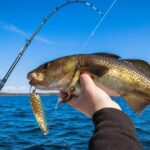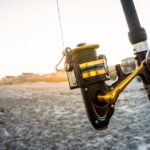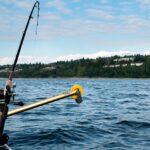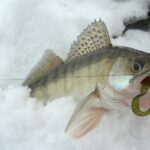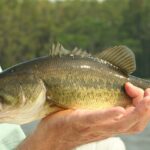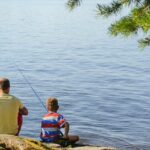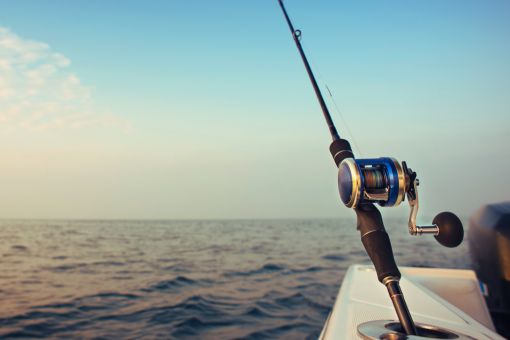
You might have been wondering about the best speed when trolling for fish. You see others going with the current and others against it while others cross it. You also notice that some are going fast, whereas others are going slow. Some have a lot of gear in the water, and others don’t. So it is only natural to wonder, how fast should you troll, and does it matter?
When trolling inshore, go slow from barely moving and gradually move the throttle to around 1-3 knots, varying the speed and depth until you find the fish. Going offshore is vastly different and a bit more technical. Your speed can range between 1-12 knots and even faster for some fish.
Trolling in lakes, rivers, streams, deltas, and under bridges has unique opportunities and challenges. The same is true for offshore fishing. When trolling for monsters or those smaller species, you will have way more factors to consider, and in a later section, we will go into more detail.
How To Find The Correct Trolling Speed
Trolling is about triggering an impulse bite response from certain fish species and not allowing the fish to examine your bait. There are a few tried and tested ways and tactics one can employ to give you a better chance. However, it should be noted that the fish should first see the bait or lure to trigger their chase response. No correct or perfect speed exists, but ranges and other predictable tactics help guide you.
We need to understand a few things about trolling first. When talking to seasoned fishermen about how fast you should troll, you will undoubtedly hear, “It depends.” Some will say 6-8 knots, while others say 1-3 knots, “but” you’ll need to consider this or that. Depending on the day’s conditions, such as weather, season, and time of day, you can troll at speeds ranging from barely moving to 12+ knots.
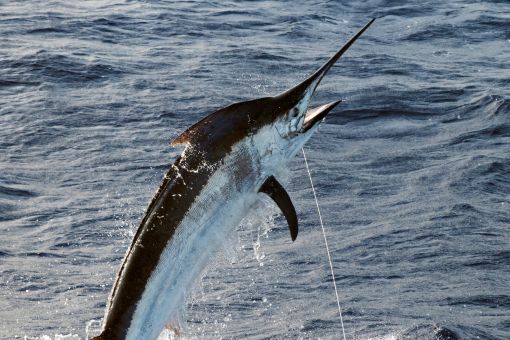
You also find that the various species of fish targeted with trolling will be in a predictable range of trolling speeds. Therefore, you should adjust your speed accordingly. For example, marlin and tuna require faster trolling than trout or walleye.
Factors like water clarity, current, wind, target species, and much more are involved when finding out how fast you should troll for fish. Even if you go out today and succeed at a particular spot at a certain speed, that does not translate into success for tomorrow. You will find that most skippers learned to adapt to the water.
Another factor that makes it difficult to accurately say this is how fast you should go is the type of boat you have. Your boat will be different from someone else’s, and even then, are you using natural bait vs. artificial. How fast do you need to go to prevent your presentation from getting washed out? Will you use a downrigger or a planer board?
Why Is The Correct Speed Valuable?
To activate the impulse response from fish, you need to create a flash, a trail, or a popping movement that can catch their attention. It would be best to have your bait or lures trolled fast enough to create a smoke trail or air pocket. You are going too fast when your presentation starts spinning or acting erratic. It is best to slow down and let it straighten out.
On larger boats, try trolling with matching types of lures at different depths and lengths in a grid format. Then create an “s”-style or zig-zag pattern and see which lines get hit. The lines on the inside will slow down, while those on the outside will speed up. This will provide valuable information on what is biting at what speed that day. Adjust accordingly.
The size (weight and length) and shape of lures will also impact how fast and elegant it moves through the water. The skipper should document the various information in a log to use as a reference guide the next time they are at that location.
How Do You Measure Your Speed?
1.15078 Miles is equal to 1 Knot per hour and is primarily used in maritime, wind, and airspace applications. Most charts and guides will give you ranges in knots or miles per hour. However, a common mistake is using your tachometer speed, which will only tell you how fast your shaft speed is in RPM.
Another way is to look at your odometer. Still, again this gives you the over-water speed and will not always be accurate since it will be different when going with or against the current and wind. According to most boat owners, the best way is to use your GPS speed since that is the speed you are going over land.
You might say, I’m not going over the ground; I’m in the water. All salt or freshwater has land under it, which is the best way to track your speed at a constant reference point. You want to use this as the measurement when trolling and creating a chart for later reference.
Again others will say no; the best way to measure trolling speed is to get the correct water speed at the lure. Ultimately, it is all opinions and preferences; you will find what works best for your situation. You can do this with specialized measuring systems. More on that later.
There is also the question of active and passive trolling, or let me put it another way. Are you using trolling as your primary intent for fishing? Or are you only putting lines in the water while moving from one spot to the next, hoping to catch something along the way? Are you trolling offshore or inshore?
Let’s examine the speeds and tactics involved with passive and active trolling.
Trolling Speed While Going To Another Location
Trolling while traveling to a specific location offers unique opportunities to catch something along the way. However, since this is not your primary focus of the day, you need to find the sweet spot. This is where you don’t go too slow and sacrifice valuable time getting to your desired location. But also do not go too fast that your lure or bait will not attract anything.
I have seen guys drag their bait so fast that it looks like a skier flopping on the water. You will not catch anything that way. A good indication would be that your presentation will drag just below the water’s surface and pop in and out every few seconds. This should create a good smoke trail while creating enticing movement and flashes to attract those faster-swimming fish.
Choosing the correct lures that can run true at a faster speed is crucial. We suggest getting lures created for Wahoo. No crew or client on the charter will mind the delay in getting to the desired location if you suddenly stop to reel in a good size fish. You will get fish onboard this way, making the day worth it.
Trolling Speed To Target A Specific Area Or Species Of Fish
Trolling as the primary means of catching fish has long been a profitable and tested way for boat owners to bring some meat home. Trolling for Marlin, Bluefin Tuna, Wahoo, or Sailfish requires proper setups and gear. These fish species can reach top speeds of well over 30 knots. Dragging your lure through the water at these speeds would be impractical since it would look unnatural and spin out of controll.
The average speed for trolling offshore is between 6-10, with 8 knots being the faster species’ sweet spot. You can catch most species at this speed. Creating a spread with your lures, placing them at various depths and lengths, and using outriggers will make your trolling life more rewarding.
The Trolling Speed With And Against The Current
The best way to troll is going across the current or perpendicular (90 degrees) to the current. Fish tend to swim either with or against it. Your goal will be to drag your bait across their field of view to trigger their response.
Freshwater Vs. Saltwater Trolling Speeds
Freshwater trolling is not as technical as saltwater trolling but has a few techniques to master. Nevertheless, I see a lot of guys going out on their boats and kayaks trolling for bass, laker, salmon, and trout with great success. Speeds vary from 1 to 2 knots, but you can go up to 3 knots. As mentioned before, saltwater trolling can vary between 1-12 knots.
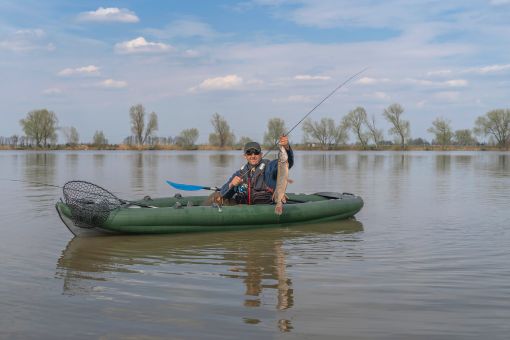
How Fast Should You Go When Trolling With A Plainer
We have found that the average trolling speed with our boat at the locations we fish with a number 6 plainer is about 6-8 knots. Yours will depend on the area and gear you are using. You get a wide range of size planers with various shapes and weights. Remember that the plainer size refers to the weight on the front of the plainer, not the plate’s size.
The depth at which you are trolling, the type of line you use, and the size plainer will impact the speed you will troll. It will take some experimenting and trials to get used to fishing with a plainer, but you can succeed when you figure it out for your location.
Factors That Will Influence The Trolling Speed
Now that we understand the various speeds and how to measure them, let’s go into all the factors that impact trolling rate.
The Water Temperature
At first glance, one would not think water temperature would make a difference, but it does. In warmer water, fish are more active, and their metabolism will be faster, making them hungrier. The opposite happens when water is cold, the fish becomes lethargic, and their metabolism slows down. To translate that to trolling speed, you need to adjust your speed faster or slower depending on the water temperature.
Do Watercolor And Clarity Impact Trolling Speed
The watercolor or clarity does not directly impact the speed at which you will troll but will affect how the lure will attract the fish. The more transparent the water, the more color you would want to use, like bright pinks, oranges, and whites. The murkier the water, the use of blues and greens is recommended. The lures you’ll want to use should match the watercolor conditions of the day.
This sounds counter-intuitive since one would think to use brighter colors in murky water, but it is more natural for fish to adapt to the watercolor. In addition, the prey will naturally camouflage themselves according to the brightness of the water, so your presentation should reflect that. They will also hide behind and under rocks and dash between hiding places.
You aim to create similar movement and flashing patterns to trigger a quick response from predatory fish.
Trolling Speeds For Specific Species Of Fish
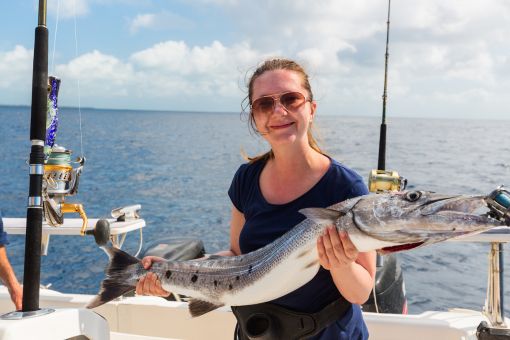
Below you will see a table of the most popular species of fish caught while trolling salt and freshwater. This is not a full list since there are hundreds more we could add.
| Fish Species | Trolling Speed (Knots) | Saltwater/ Freshwater | Nearshore/ Deep Sea |
| Tuna | 6 – 10 | Saltwater | Deep Sea |
| Marlin | 7 – 10 | Saltwater | Deep Sea |
| Wahoo | 7 – 12 | Saltwater | Nearshore/Deep Sea |
| Mahi Mahi (Dorado) | 5 – 8 | Saltwater | Nearshore/Deep Sea |
| Sailfish | 6 – 10 | Saltwater | Deep Sea |
| Swordfish | 3 – 6 | Saltwater | Deep Sea |
| Barracuda | 4 – 7 | Saltwater | Nearshore |
| King Mackerel | 5 – 8 | Saltwater | Nearshore/Deep Sea |
| Cero Mackerel | 5 – 8 | Saltwater | Nearshore |
| Bonito | 4 – 7 | Saltwater | Nearshore/Deep Sea |
| Spanish Mackerel | 4 – 6 | Saltwater | Nearshore |
| Trout | 1 – 3 | Freshwater | Not Applicable |
| Bass | 1 – 2 | Freshwater | Not Applicable |
| Walleye | 1 – 3 | Freshwater | Not Applicable |
| Northern Pike | 1 – 3 | Freshwater | Not Applicable |
| Muskellunge | 1 – 3 | Freshwater | Not Applicable |
| Salmon | 1 – 3 | Freshwater/Saltwater | Nearshore in Saltwater |
| Steelhead | 1 – 3 | Freshwater/Saltwater | Nearshore in Saltwater |
| Kokanee | 1 – 2 | Freshwater | Not Applicable |
| Lake Trout | 1 – 3 | Freshwater | Not Applicable |
The Water Depth
The Water depth can impact your trolling speed because of drag. You would need to use planer boards or downriggers to place your lure at varying depths. You must adjust your speed accordingly, depending on the current, amount of lines in the water, and swell intensity. Aquireing a lure speed monitor will help with deep water trolling.
Trolling Speed Systems
The last factor we want to address is measuring trolling speed with various system types. Again, as with so many other fishing gear options, you have options for the kind you’ll use for trolling. Your location and currents will differ from another person’s, and you must determine the best speed for your spot.
The best way to have consistency with your trolling speed is to use an in-water speed tracking system such as a Fish Halk probe to check your lure’s speed or a trolling speed indicator
The Lure Or Bait Type
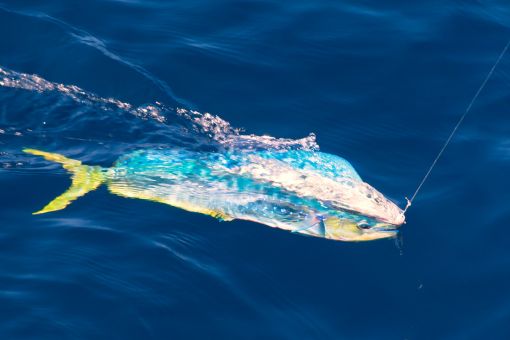
The type of lure or bait will affect your trolling speed too. You get so many kinds of artificial bait, but the main focus is to get your speed to where the presentation runs smoothly through the water. It might take some minor adjustments to get it perfect. When using real or natural bait, you must slow down; and place it within the prop wash. Fish are attracted to the prop wash; having your bait just outside the wash will create opportunities.
Wind and underwater currents can significantly affect your trolling speed, especially for the lure you use. Here is a table on some of the popular types of presentations and their speed ranges:
| Lure Name | Trolling Speed (Knots) | Lure Description |
| Jet Head Lures | 6-9 knots | Jet Head Lures feature a streamlined head that creates a lot of turbulence and bubbles to attract fish. |
| Cedar Plugs | 5-7 knots | Cedar Plugs are wooden lures that imitate small fish. They are best trolled at moderate to high speeds. |
| Bullet Lures | 6-12 knots | Bullet Lures are long, cylindrical lures that create a lot of splash and noise to attract predators. |
| Nomad DTX Minnows | 6-10 knots | Nomad DTX Minnows are designed for swimming straight and true at high speeds, making them ideal for tuna and wahoos. |
| Williamson Lures | 7-10 knots | Williamson Lures feature a variety of shapes and sizes, including the Jet Popper and the Surface Pro. |
| Moldcraft Wide Range Lures | 7-9 knots | Moldcraft Wide Range Lures have a cupped face that creates much commotion and is perfect for sailfish. |
| Halco Roosta Popper Lures | 6-8 knots | Halco Roosta Popper Lures are designed to be popped across the water’s surface to attract fish. |
| Trolling Spoons | 1.5 – 2.6 knots | A spoon-shaped lure that wobbles and flashes in the water |
| Flasher with Fly | 1 – 2 knots | A flasher is a reflective device that attracts fish, with a fly or bait behind it |
| Metal Dodgers/Paddles | 1 – 2 knots | A dodger is a metal plate that spins and creates a flash in the water |
| Cut Plugs | 1 – 2 knots | A cut plug is a piece of baitfish with a hook inserted |
| Crankbaits | 0.8 – 4 knots | A hard-bodied lure that imitates baitfish swimming |
| Spinner Worm Harness | 0.8 – 2 knots | A spinner blade with a worm or bait attached |
Conclusion
You can find the ideal trolling speed for the day by following our few easy tips. No matter the water type, color, or temperature, you can find fish with some patience and tactics. For freshwater and nearshore trolling, we recommend starting at 1 knot and moving up to 4. For deep, see troll fishing begin at 5 and move up to 8 knots. When traveling between fishing spots, you can go up to 12 knots.
- Do You Need An Indicator For Nymph Fishing? - November 16, 2023
- Fishing Safety Tips For Families - September 25, 2023
- What Is The Best Time To Night Fish At A Lake? - September 18, 2023

